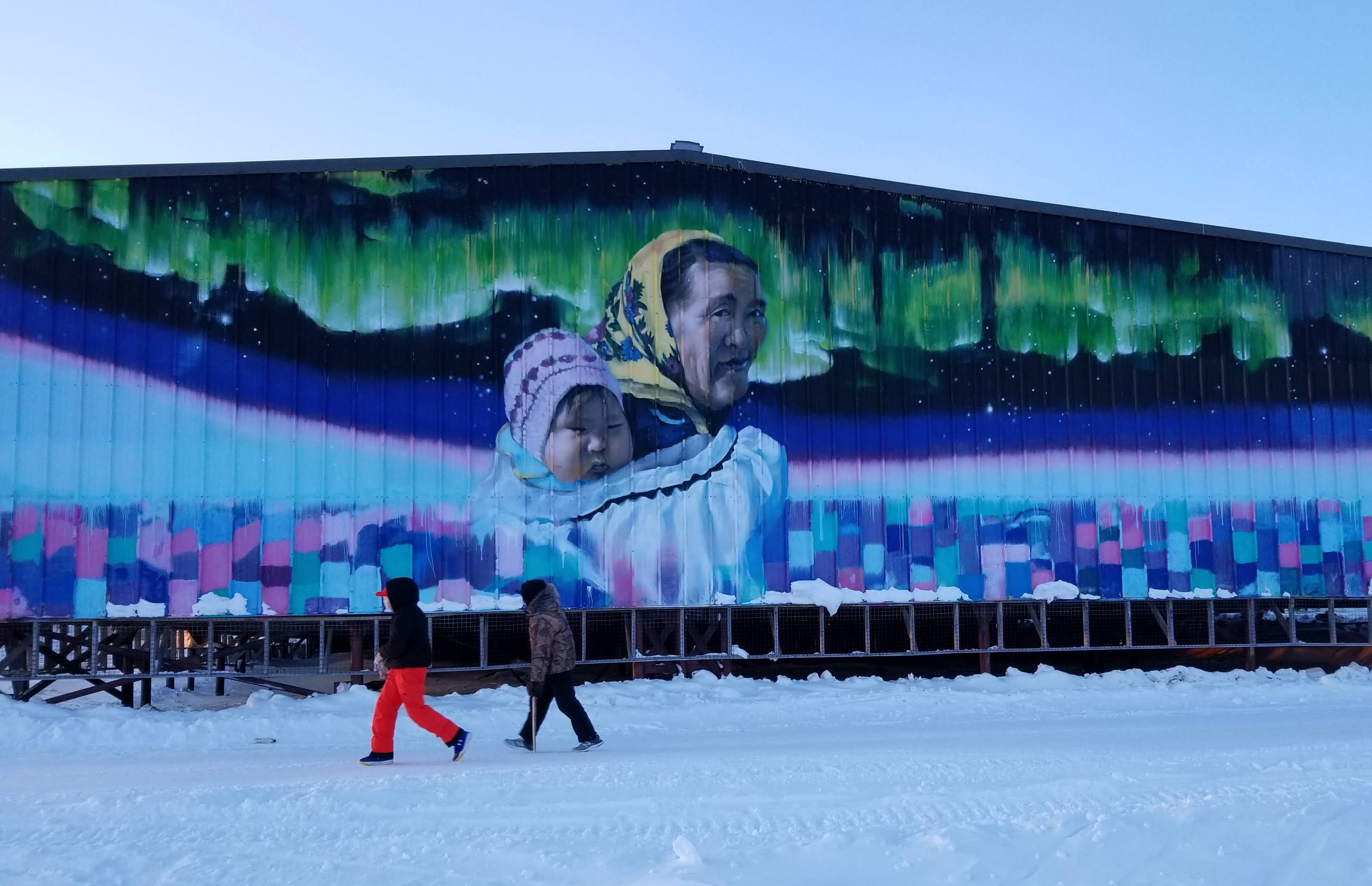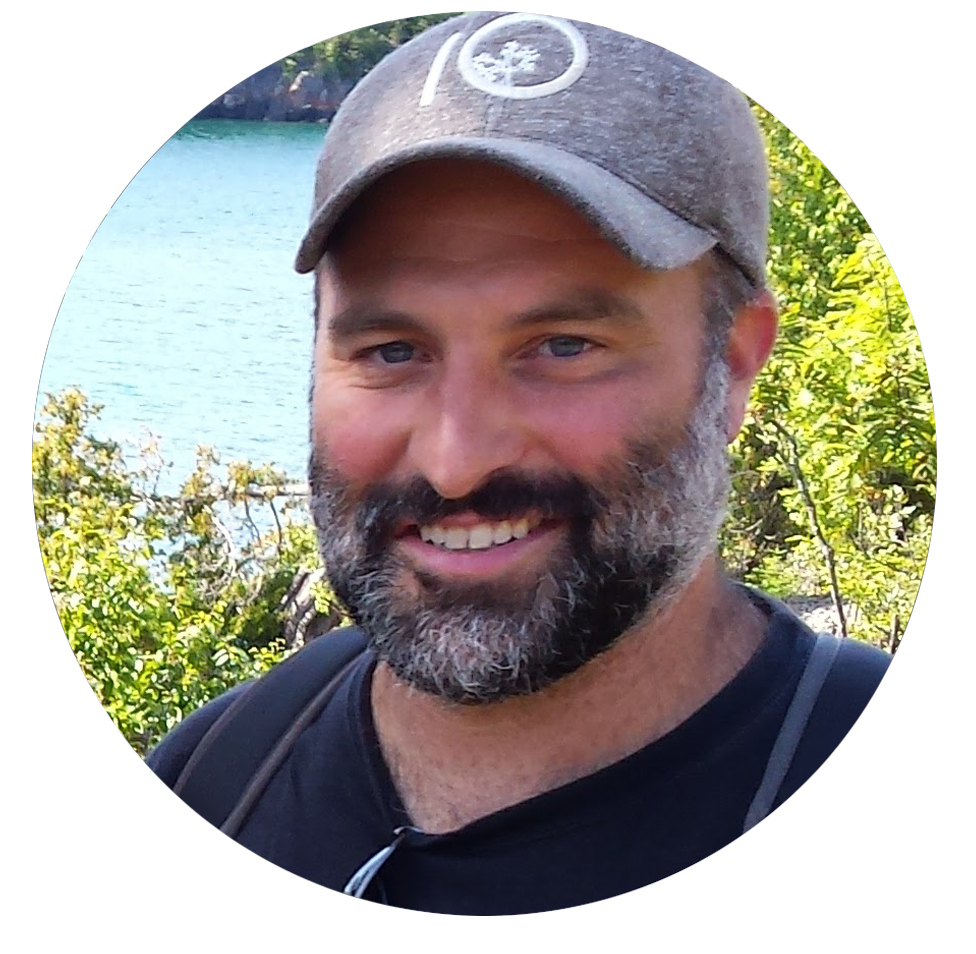 Author: Wes Normington, Executive Director
Author: Wes Normington, Executive Director
This post is part two of a two-part series. Read the first post about a trip to Northern Ontario.
Arviat, Nunavut March 2019
It’s about 12:30 A.M. on a Saturday night in Arviat, Nunavut. I can’t sleep and think a snack might help. After some internal debating, I decide to get dressed, go outside and walk to the store that’s open late. It’s -45 degrees Celsius with the wind chill. This was not an easy decision…but, chips!
I bundle up and head outside. I start walking down the road and the first thing I notice is the number of people who are outside at this late hour in this weather! Kids are playing road hockey, snow machines criss-cross the road, other kids are hanging out. Did I mention it’s -45?
As I’m walking quickly, my face takes the brunt of the cold, I catch something in the peripheral. I look left and at first think it’s…smoke? Nope. It’s a fuzzy streak of green in the sky, just existing, independent of any source. It’s the northern lights. I take off my gloves, pull out my phone and start snapping photos. It feels as if it’s moving, so I follow it, while holding up my phone. My hands throb with a dull pain from the cold. Then it’s gone. As I put away my phone and put my gloves back on I swivel around to see more has appeared. The process starts all over again.
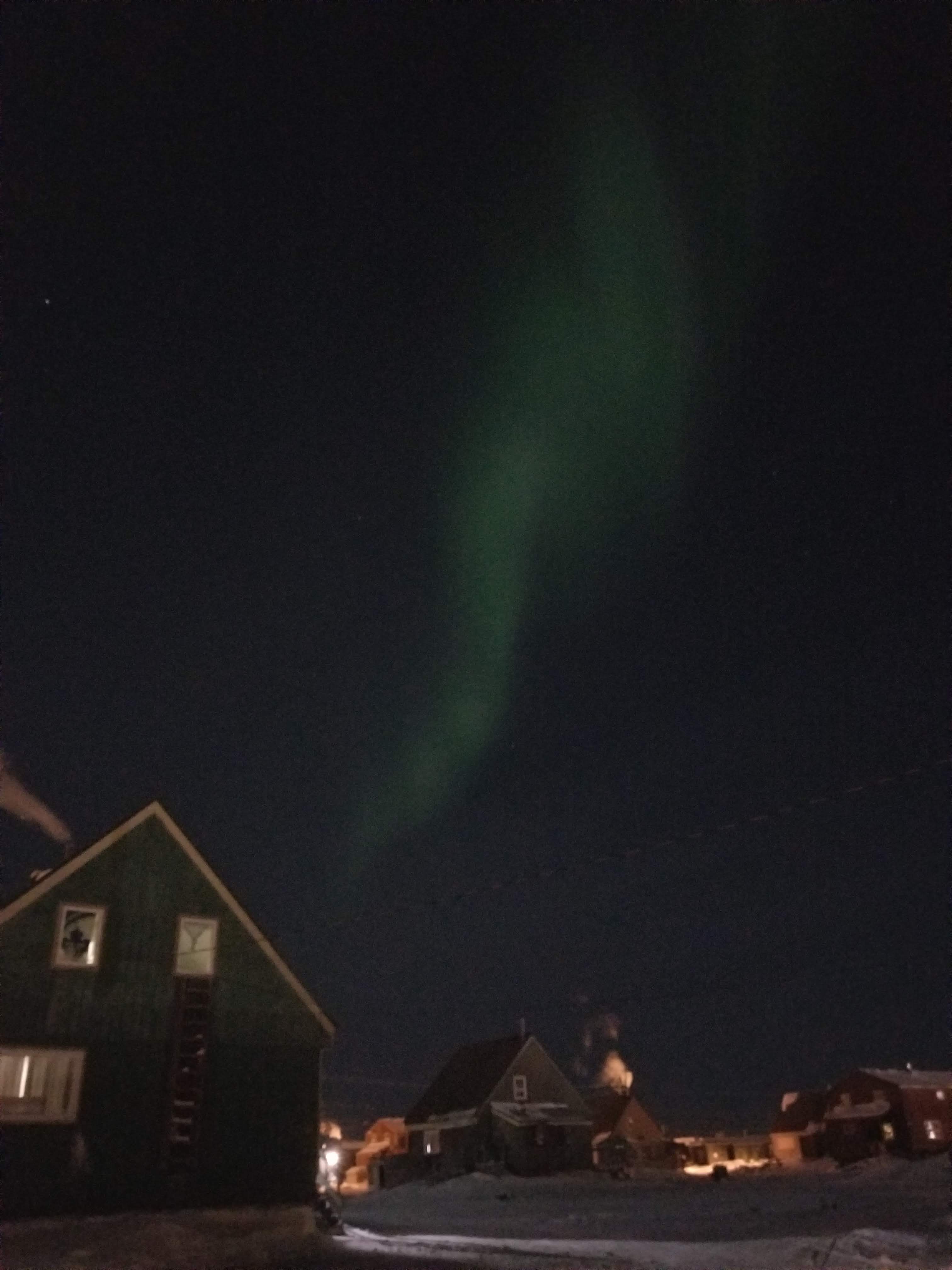
This happens four or five times before I realize I’ve been standing in the road staring at the sky while hockey games, snow machines, trucks and other people pay zero attention to what I’m freaking out about. They have, of course, seen it before.
We are in Arviat, Nunavut to lead a community event and provide workshops for the Kivalliq Science Educators Community’s (KSEC) Science Fair.
During our four days in Nunavut we hear anecdotes while talking community members about thinning ice, smaller polar bears and shifts in the seasons. This re-enforces our choice to make the journey to explore how we can help communities incorporate renewable energy options in the future.
Tinkering and building
Shannon McGaffey, our Ottawa Program Coordinator, and I setting up for the community event at the hall. There’s different stations for solar car races, wind turbine demonstrations, solar car design and building tables and other gadgets.
Educational renewable energy activities are not a common occurrence in Arviat. We weren’t sure how many people, if any, would show up…. Over three hours there was a steady flow of kids in and out of the hall. More than 100 kids utilized solar and wind energy in a variety of ways and learned about their applications. The energy in the room shifted between a party-like atmosphere and a quiet murmur of kids tinkering, building, and driving solar cars.
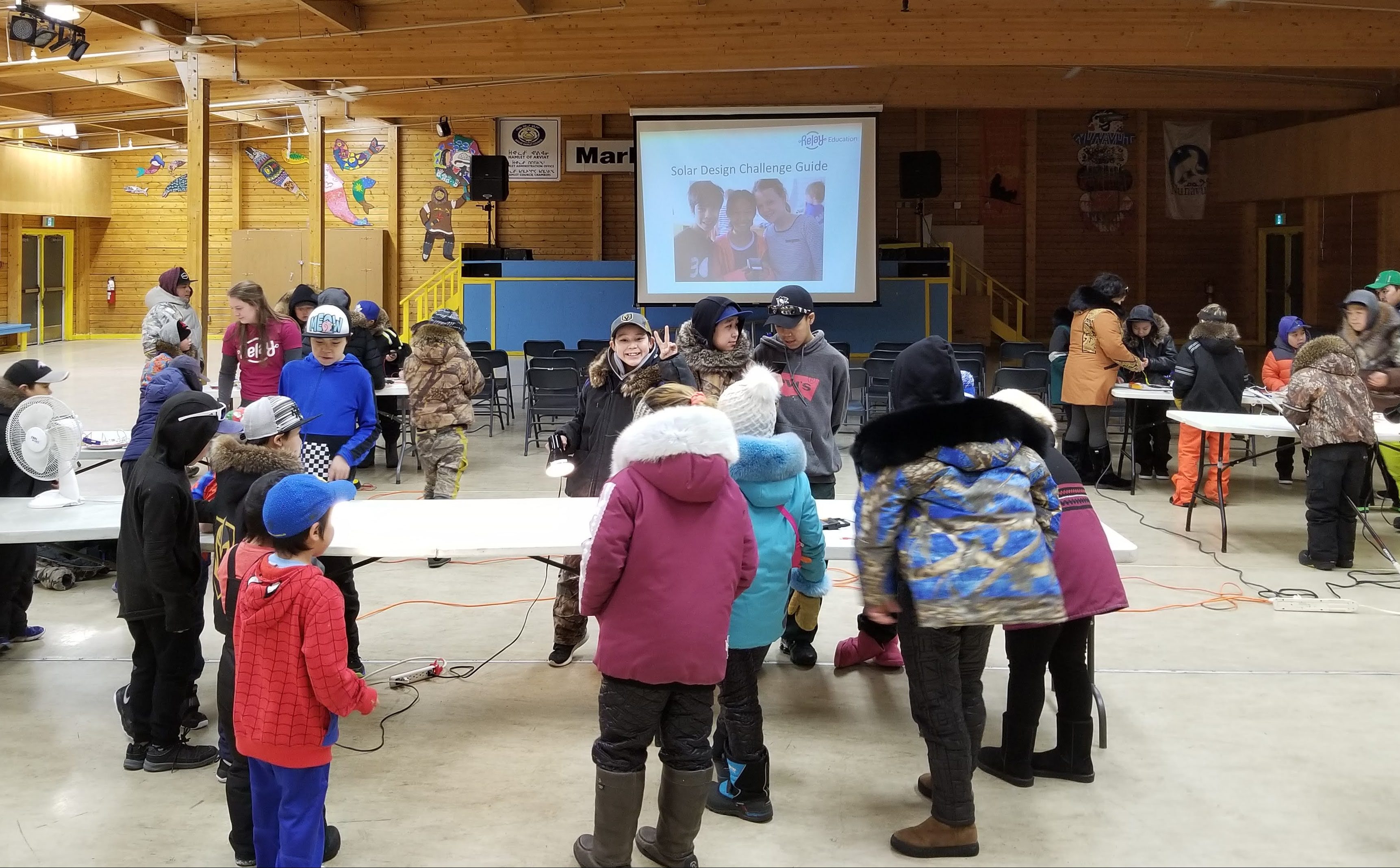
Northern Science Fair
22 kids from across the Kivalliq region of Nunavut traveled to Arviat to compete in the KSEC Science Fair. The Kivalliq region includes communities near or on the western shore of Hudson’s Bay.
High winds caused flight cancelations for some, and unfortunately eight students were unable to attend. It’s too bad, but it’s acknowledged, not belaboured. Life in the north.
The kids who made it were incredible. Their science projects had to include text in both Inuktitut and English and the research should focus on topics relevant to the north.
The science fair attendees participated in a Relay solar car building workshop.
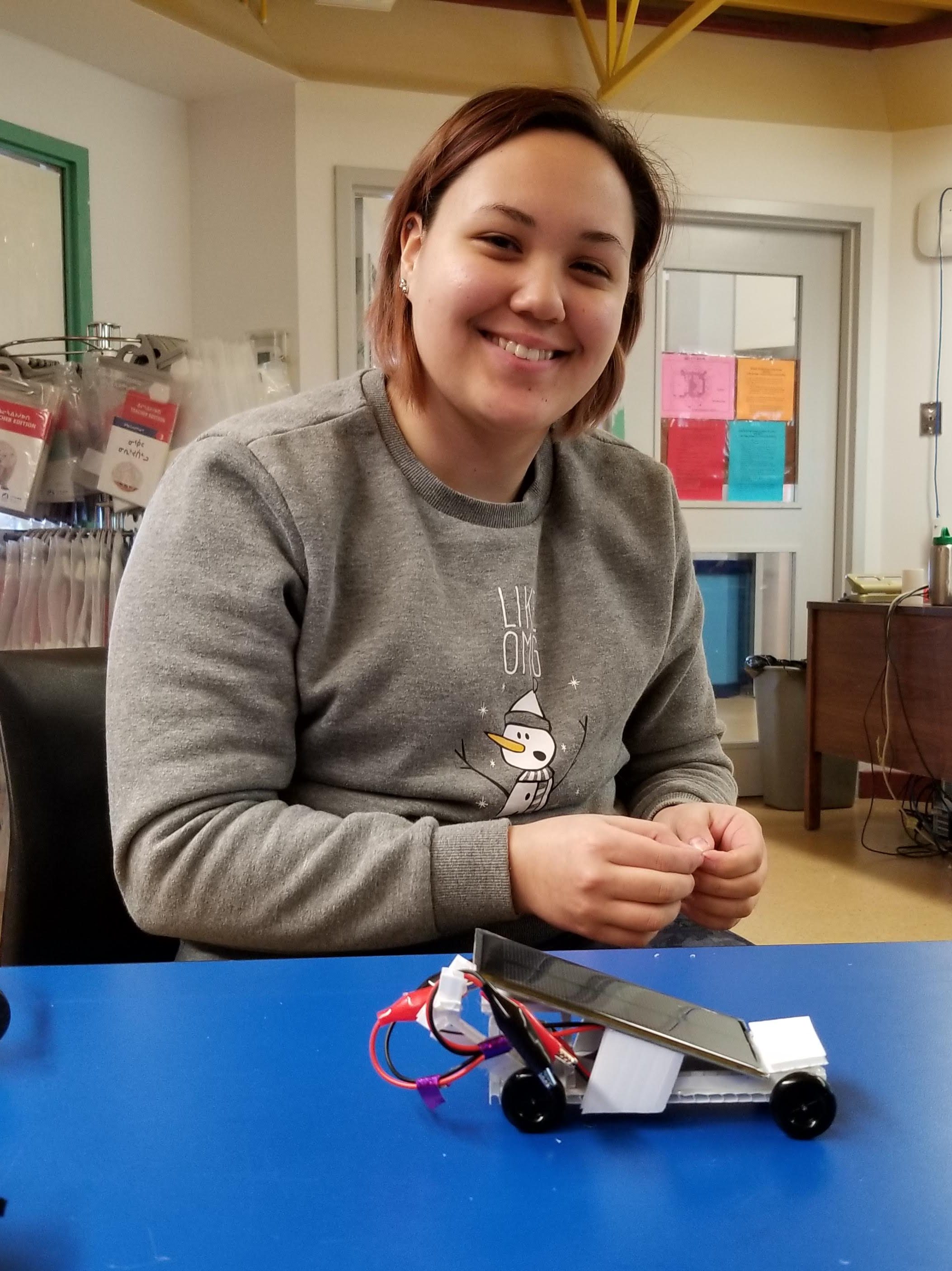
Natalie, 17 years old, from Arviat, Nunavut
“I had a lot of fun building the car. [I learned today]…that there are different types of solar panels you can use for different reasons.”
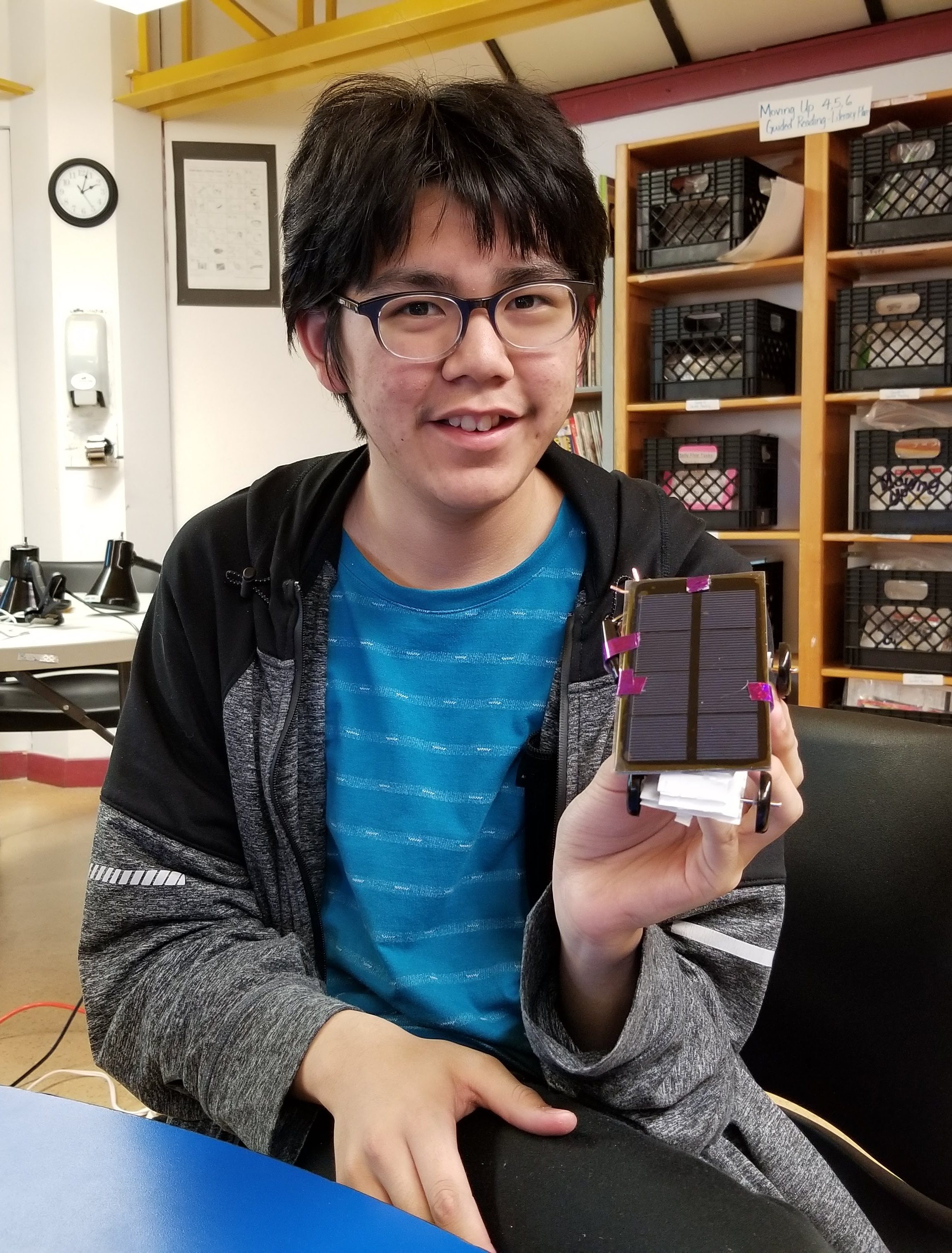
Richard, 15 years old from Baker Lake, Nunavut
I spoke with Richard about the workshop, he thought “it was good!”, and he had a lot of fun building his solar car. One of the teachers, Mark Ronald from Rankin Inlet, expressed that it was a “Rewarding experience – the kids were engaged. They made something that worked….It was perfect.”
On the last day, Shannon and I had some time to explore and asked a student if we could walk to the cemetery outside of town. She said, matter-of-factly, “Yes, if you bring your gun”. Polar bears are more prevalent in Arviat during the fall, but there is always a chance you could come upon one in March. I did not have a gun. So, we hired a driver.
With a successful community event and terrific science fair, we are excited by the prospect of working together over the long-term. It is our goal to share our programs with local educators who can tailor lessons about solar, wind and biogas energy to the realities and opportunities in Nunavut.
I like to think I was prepared for the north…. but, I did not bring my sunglasses.
I will not make that mistake again. It was clear and blindingly bright every day.
There are logistical challenges, but there’s also an interest, enthusiasm, and resiliency from a large youthful population who want to be part of a sustainable future.

